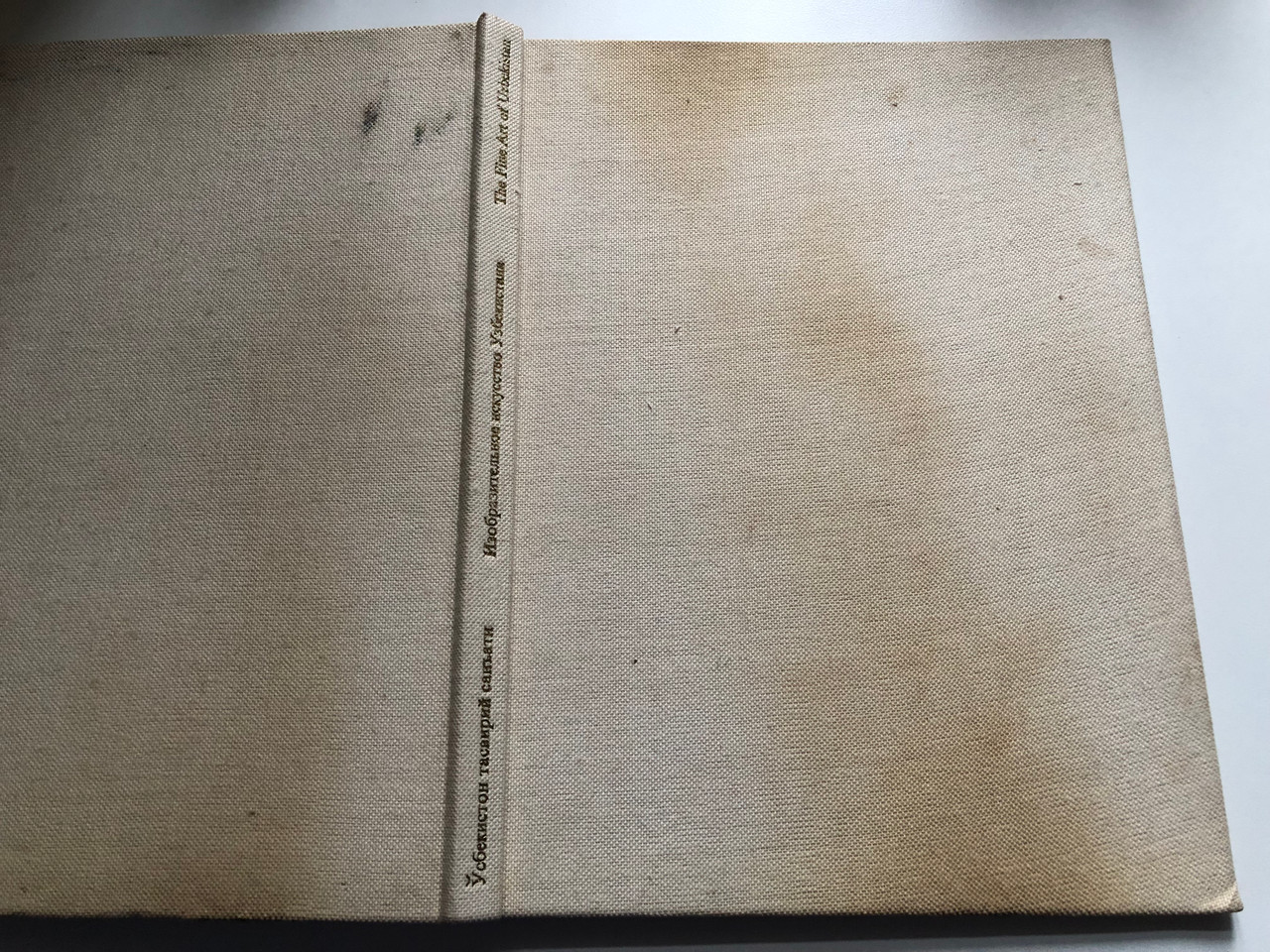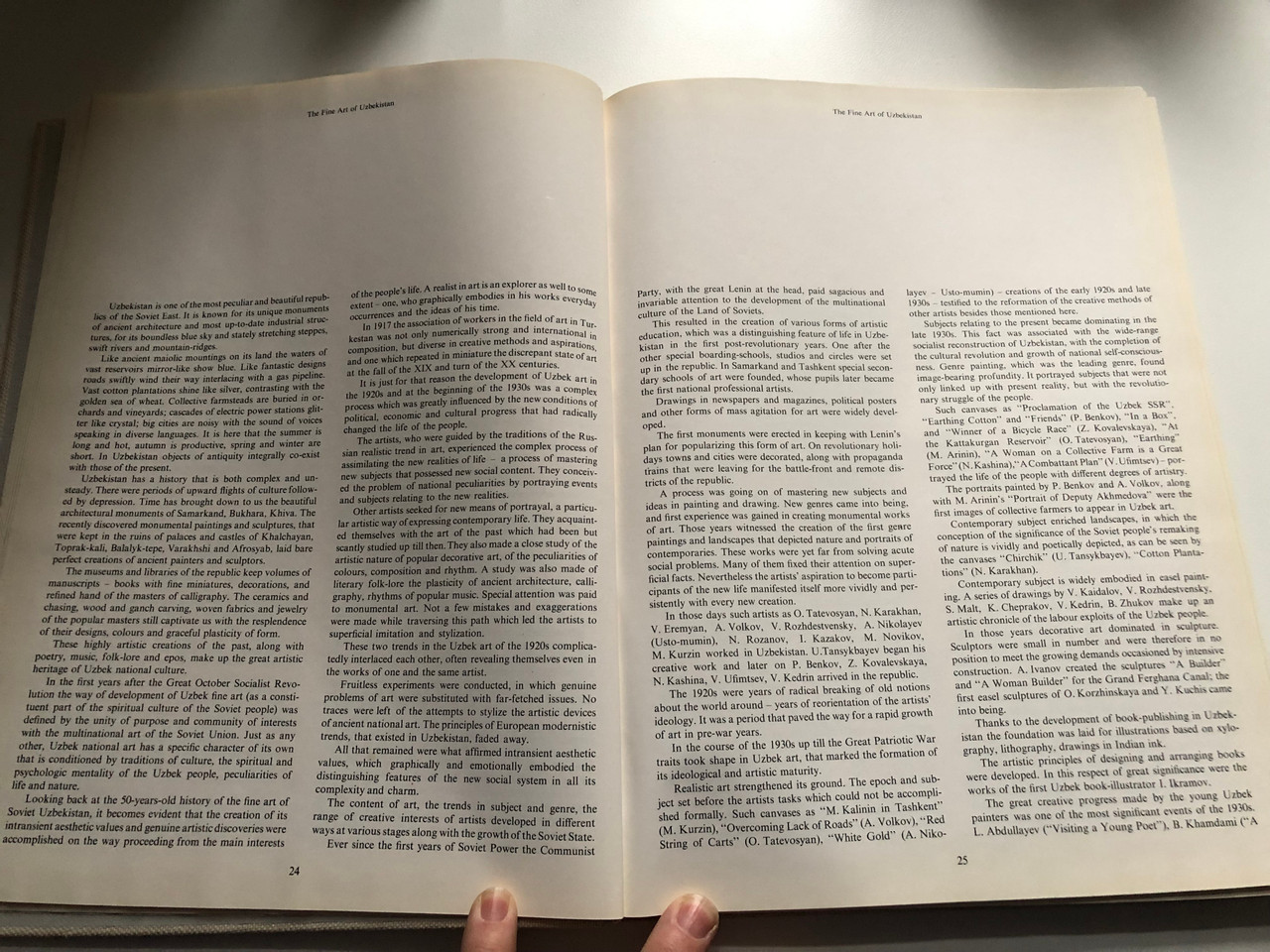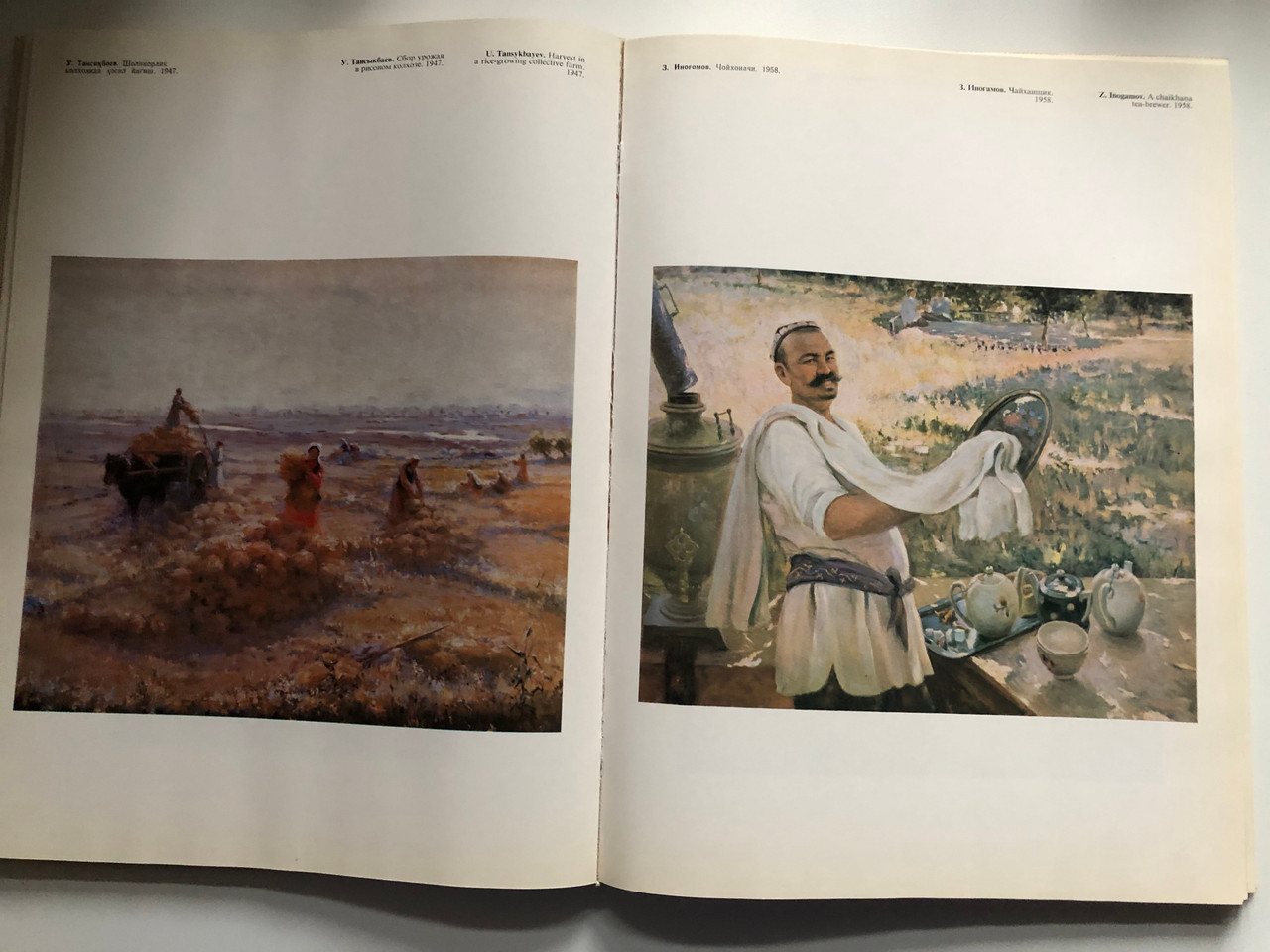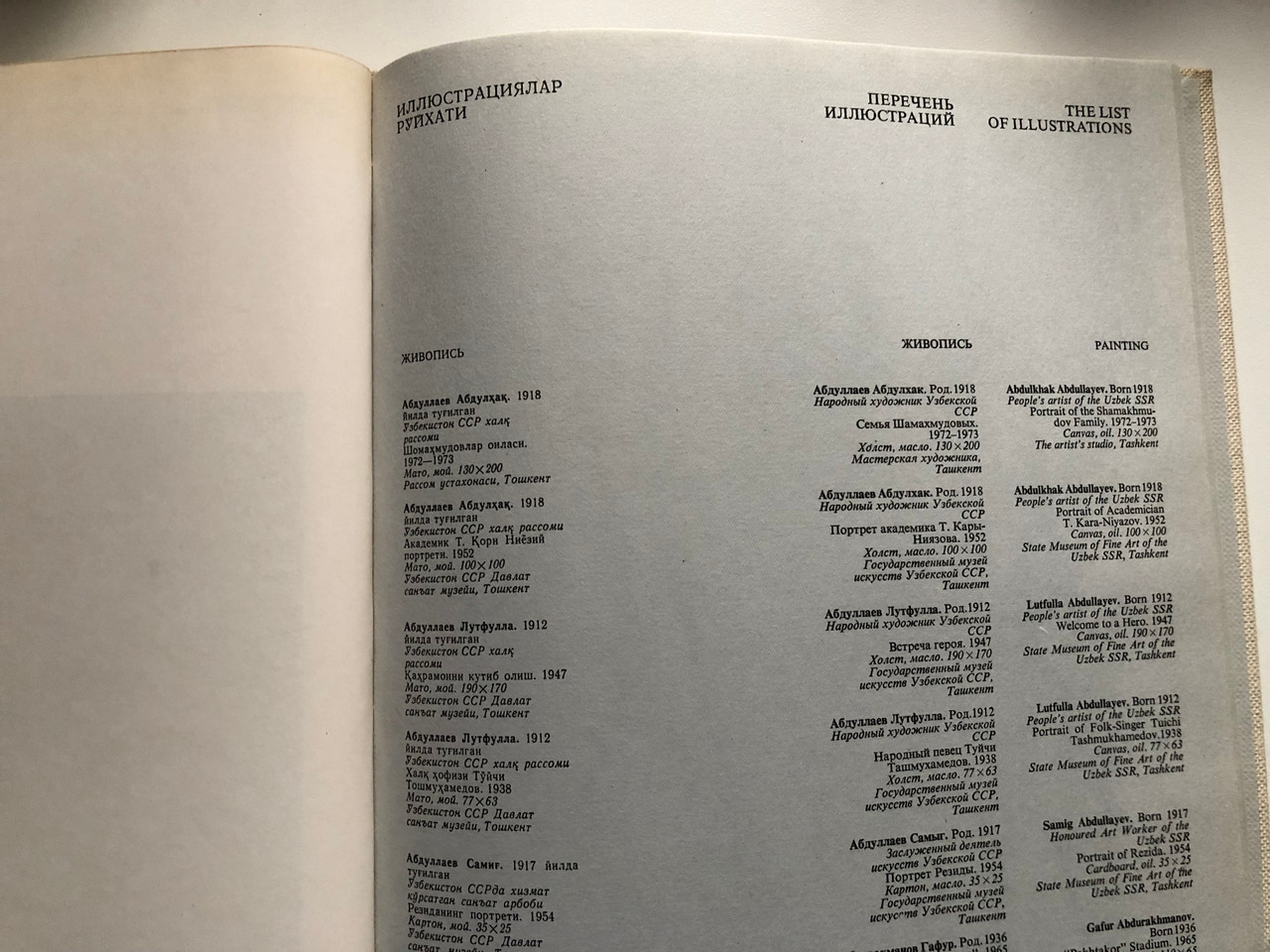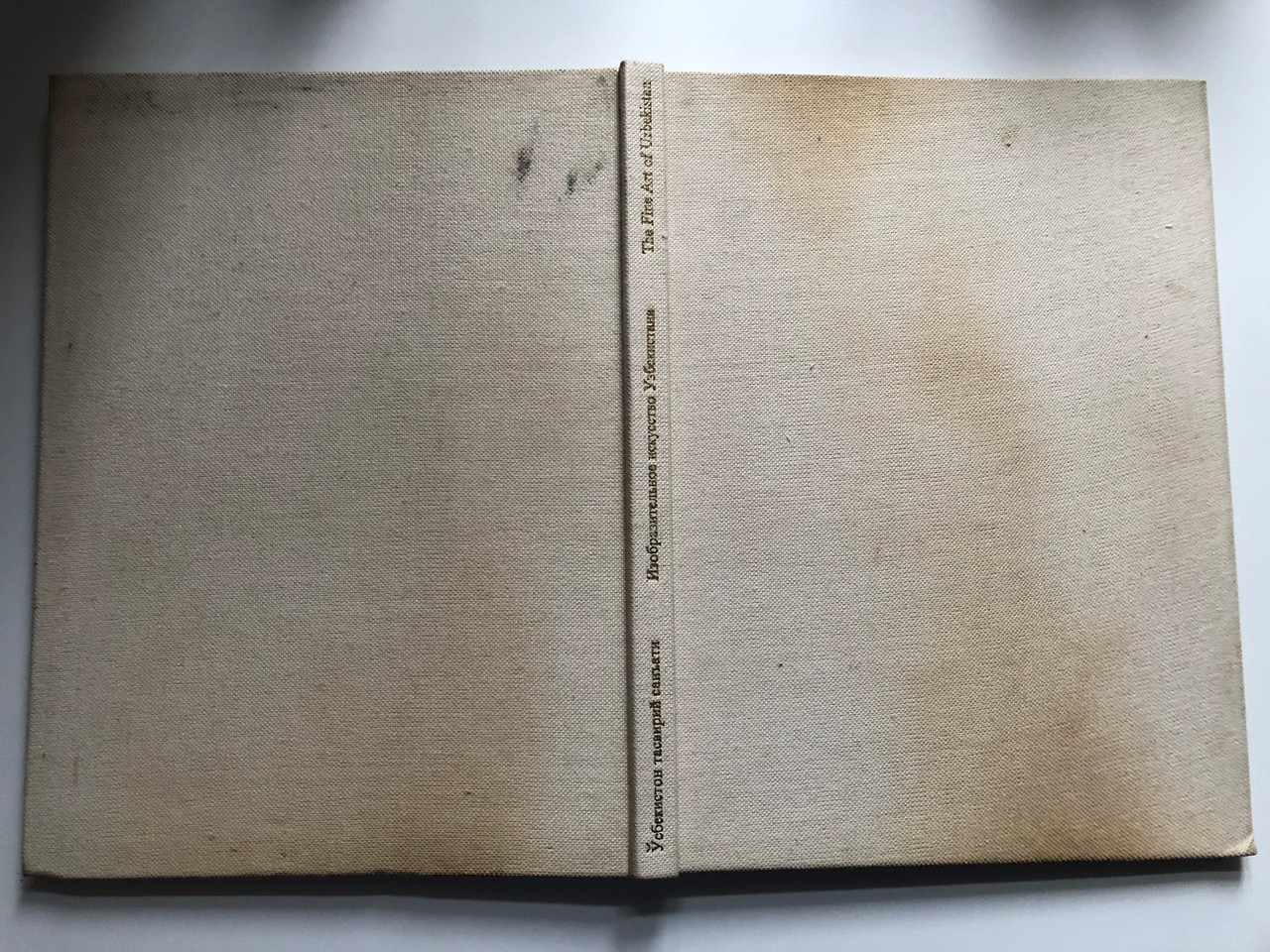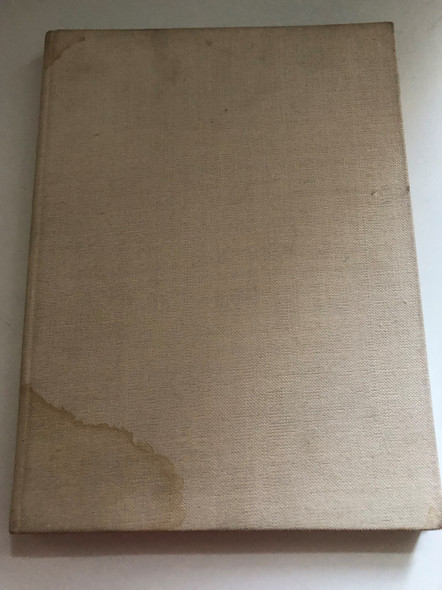Description
ЎЗБЕКИСТОН ТАСВИРИЙ САНЪАТИ / ИЗОБРАЗИТЕЛЬНОЕ ИСКУССТВО УЗБЕКИСТАНА / THE FINE ART OF UZBEKISTAN
Product Details | Маҳсулот тафсилотлари | Описание книги
- Title | Сарлавҳа | Название: Ўзбекистон тасвирий санъати / Изобразительное искусство Узбекистана / The Fine Art of Uzbekistan
- Publisher | Нашриёт | Издательство: Ғафур Ғулом номидаги адабиёт ва санъат нашриёти / Издательство литературы и искусства им. Гафура Гуляма / Gafur Gulyam Publishing House
- Publication Year | Нашр йили | Год издания: 1976
- Location | Жойлашув | Место издания: Тошкент / Tashkent
- Printing House | Босмахона | Типография: Grafische Werke Zwickau, East Germany
- Format | Формат: Hardcover
- Language | Тил | Язык: Uzbek, Russian, English
- ASIN: B004UC6HJC
Overview | Умумий маълумот | Обзор
This beautifully curated book provides an extensive overview of the fine arts of Uzbekistan, covering painting, drawing, sculpture, and decorative-applied arts. It showcases the rich artistic traditions of Uzbekistan, reflecting its cultural evolution through visual arts. Featuring works from prominent Uzbek artists, this volume is an essential addition for art lovers, researchers, and collectors interested in Central Asian artistic heritage.
Ушбу гўзал тўплам Ўзбекистон тасвирий санъатига кенг назар ташлайди ва живопись, графика, ҳайкалтарошлик ва декоратив-амалий санъат йўналишларини қамраб олади. Китоб Ўзбекистоннинг бой бадиий анъаналарини акс эттириб, миллий санъатнинг ривожланишини намоён этади. Машҳур ўзбек рассомлари ижодига бағишланган бу асар, санъат мухлислари, тадқиқотчилар ва коллекционерлар учун муҳим манба ҳисобланади.
Эта великолепно оформленная книга представляет обзор изобразительного искусства Узбекистана, охватывая живопись, графику, скульптуру и декоративно-прикладное искусство. В издании представлено богатое художественное наследие Узбекистана, отражающее его культурное развитие. Книга включает работы известных узбекских художников и является ценным источником для любителей искусства, исследователей и коллекционеров.
Key Features | Асосий хусусиятлар | Основные особенности
✔️ Comprehensive visual collection of Uzbek fine arts
✔️ Richly illustrated with high-quality reproductions
✔️ Explores various artistic disciplines: painting, sculpture, applied arts
✔️ Showcases works of renowned Uzbek artists
✔️ Trilingual edition (Uzbek, Russian, English) for wider accessibility
✔️ Ўзбекистон тасвирий санъатининг мукаммал визуал тўплами
✔️ Юқори сифатли иллюстрациялар билан бойитилган
✔️ Турли санъат йўналишларини ўрганиш: живопись, ҳайкалтарошлик, амалий санъат
✔️ Таниқли ўзбек рассомлари асарлари билан танишиш имконияти
✔️ Уч тилдаги нашр (ўзбек, рус, инглиз)
✔️ Обширная коллекция произведений узбекского изобразительного искусства
✔️ Богатые иллюстрации с качественными репродукциями
✔️ Охватывает живопись, графику, скульптуру, декоративно-прикладное искусство
✔️ Работы знаменитых узбекских художников
✔️ Трехъязычное издание (узбекский, русский, английский)
Topics Covered | Қамраб олинган мавзулар | Основные темы
Painting (Живопись / Рассомлик санъати)
Drawing & Graphics (Графика / Рассомлик графикаси)
Sculpture (Ҳайкалтарошлик / Скульптура)
Decorative and Applied Art (Декоратив-амалий санъат / Декоративно-прикладное искусство)
Interesting Facts | Қизиқарли фактлар | Интересные факты
Uzbekistan's traditional miniature painting style dates back to the Timurid era and is influenced by Persian and Mughal art.
Soviet-era Uzbek painters developed a unique blend of socialist realism and national identity in their artworks.
Applied arts such as ceramic tilework and embroidery have been integral to Uzbek artistic traditions for centuries.
Ўзбекистон миниатюра санъати Темурийлар даврига бориб тақалади ва форс ҳамда могул санъати таъсирида ривожланган.
Совет даври ўзбек рассомлари ижодида социалистик реализм ва миллийлик уйғунлашган.
Кулолчилик ва каштадўзлик асрлар давомида ўзбек амалий санъатининг ажралмас қисми бўлиб келган.
Миниатюрная живопись Узбекистана берет начало в эпоху Тимуридов и испытала влияние персидского и могольского искусства.
Узбекские художники советского периода создали уникальный синтез социалистического реализма и национальной идентичности.
Декоративно-прикладное искусство, включая керамическую роспись и вышивку, занимает важное место в узбекской культуре.
Share Your Thoughts! | Фикрларингиз билан ўртоқлашинг! | Поделитесь своими мыслями!
Have you explored Uzbek fine arts? Which style fascinates you the most? Let us know in the comments!
Сиз Ўзбекистон тасвирий санъати ҳақида эшитганмисиз? Қайси услуб сизга энг қизиқарли туюлади? Фикрларингиз билан ўртоқлашинг!
Вы знакомы с изобразительным искусством Узбекистана? Какой стиль вам больше всего нравится? Делитесь своими мыслями!
Hashtags
#UzbekArt #FineArt #CentralAsianCulture #Sculpture #Graphics #Painting #AppliedArts #UzbekistanHistory #TashkentArt #TraditionalCrafts
















































